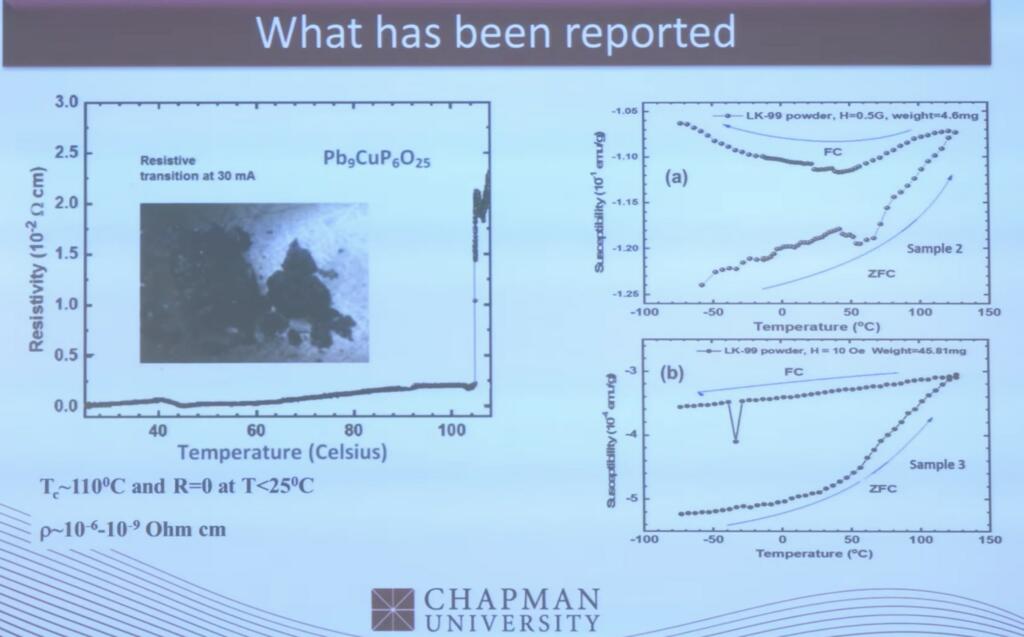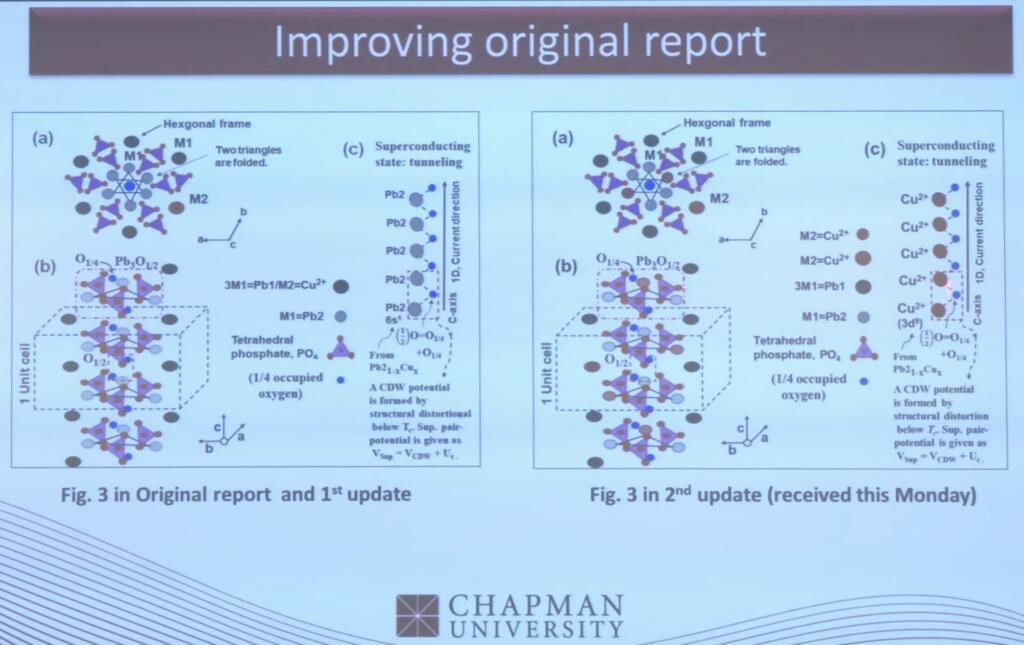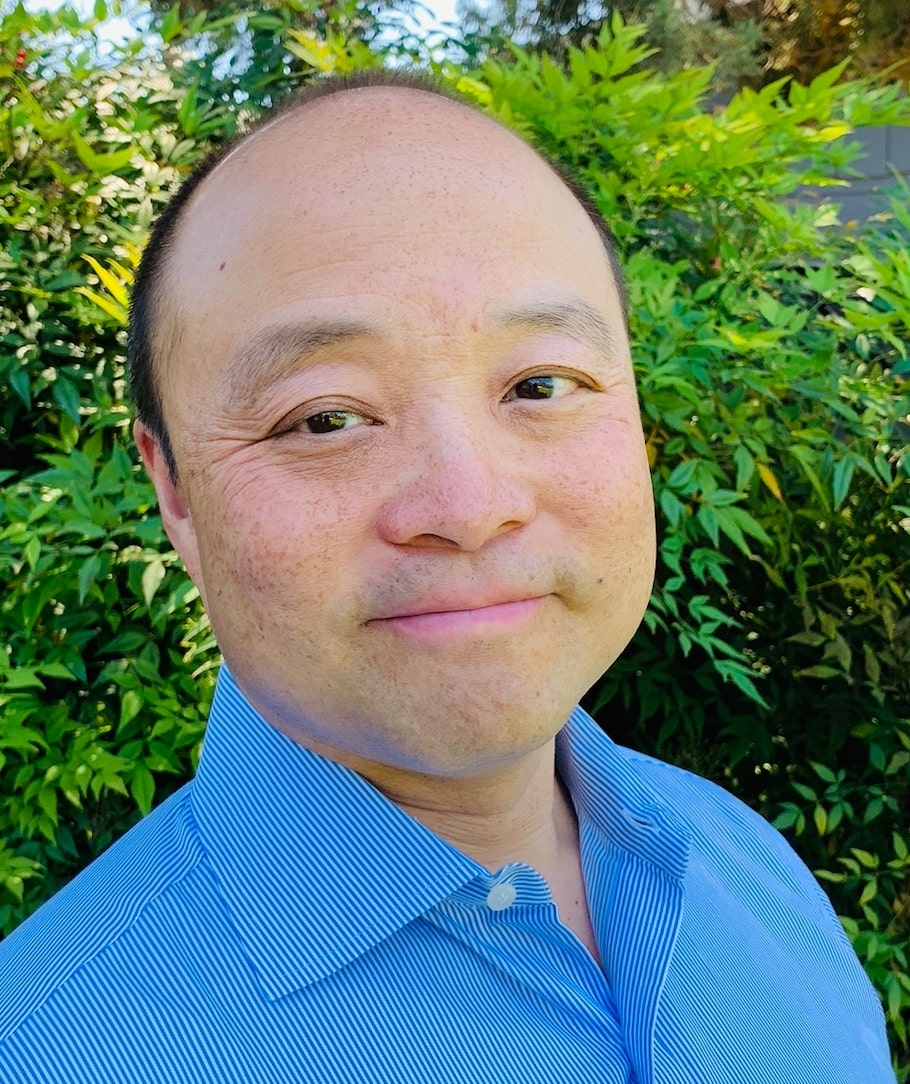The Korean Society of Superconductivity and Cryogenics’ review committee on Wednesday said LK-99, an alleged room-temperature superconductor created by a South Korean research team, has not shown any key features of superconductivity.
The Seoul-based startup Quantum Energy Research Centre, headed by Lee Suk-bae, the first author of the LK-99 research, did not send the superconductor samples for cross-validation as promised.
The committee, composed of eight research teams from local universities including Seoul National University, Postech and Hanyang University, has conducted monthslong validity tests on the so-called superconductor, since its launch in August.
Kwon Young-wan claims he led the superconductor research as opposed to first author Lee’s claims, held a press conference on Monday, and said, “I still believe LK-99 is a superconductor.”
Kwon added that the committee has failed to re-create the room-temperature superconductor because it is impossible to prove the validity of the research within several months.
Kwon declined to disclose the video showing steps for re-creating the superconductor. He says it is not ready yet.
The Main Open Question is the Thin Film LK99 Material
The original south korean research work always only claimed that there was superconducting levels of low electrical resistance in thin films of LK99. This was made with chemical vapor deposition.
— FittingMechanics (@FittingMechani1) July 28, 2023
NextBigFuture.com has covered the original LK99 papers and patent, which briefly mention the thin film work and measurements. The original team says that the thin film chemical vapor deposition process is the only one that has superconducting resistance. The thin film is microns thick and is nearly half superconductive material.
The original peer-reviewed LK99 superconductor paper only briefly mentions the thin film work and measurements. However, this is the most important part because only the chemical vapor deposited thin film has the zero resistance superconducting measurement. Nextbigfuture has said that they researchers on LK99 need to put in a effort to check the thing the korean actually said that they did. I think a few tens of millions should be put into to it to make damn sure about the thin film and to try to check the computational theory adjustments.
In August and September 2023, the consensus of other labs was that LK-99 is not a superconductor at any temperature but only bulk non-thin film samples have been made. None of replications have gone through the peer-review process of a journal.
Patent on the LK99 Thin Film Superconductivity
The matching international LK99 patent is here. WO2023027536 and WO2023027537
In the patent, they show and state there is superconducting levels of low resistance. The resistivity of LK-99 was 1/10,000 to 1/100,000 of copper.
For Example 4, the grains of the solid phase reaction were processed into a square shape and the resistance change according to the temperature change (304K ~ 382K) was measured using equipment (Power (voltage/current) Source KEITHLEY 228A, Sensitive Digital Voltmeter KEITHLEY 182, Probe Method: Measured using the 4-probe method) and the results are shown in FIG. 29. Referring to this, it can be seen that the ceramic compound according to the present invention exhibits superconductive properties.
In addition, FIG. 42 is a photograph of an experiment in which resistance was measured in real time for Example 4, and the measured resistance was approximately 10^-12 Ohms per centimeter. Very low resistance in Ohmcm.


Thanks to twitter user @8teAPi for the info on the patent info.
* More description of the vapor deposition process that makes the micron(s) thick thin film which is the only material claimed to be superconducting
* They claim they get 48.9% of the lead apatite thin film as superconductive. There is also lead compounds (40%) and Copper compounds (10%).
* The new description includes some silicon in the process
* lead apatite itself is an insulator and the korean team says they need doping and defects to make it into a superconductor
* The superconductor consists of lead apatite of phases with three different critical temperatures of Tc, I~50C, II~80C, III~125C
* In thin film, only Tc I, II were seen with resistance measurement
* they say there is diamagnetism and ferromagnetism. They say both of these are intrinsic to the mixture
* they say the Meissner effect is underneath the diamagnetism and ferromagnetism. They provide the method to measure the superconducting features
* Scanning Electron Microscope pictures of all the important phases in both methods
* much more detailed measurements and graphs
Solid State Synthesis
– they’ve described this before, but now include a little Silicon in the mixture. But they don’t say how the Si got in there!
– They claim they get 48.9% lead apatite which is superconductive, with two other lead compounds (40%) and Copper compounds (10%).
– However lead apatite itself is an insulator, they say they need doping and defects to make it into a superconductor
– I am still not clear where in the solid state process the superconductor emerges.
For both methods
– The superconductor consists of lead apatite of phases with three different critical temperatures of Tc, I~50C, II~80C, III~125C
– In thin film, only Tc I, II were seen with resistance measurement, while Tc II and III were seen with magnetic susceptability measurement due to higher sensitivity
Magnetism
– they admit diamagnetism, they admit ferromagnetism. They say both of these are intrinsic to the mixture
– they say the Meissner effect is underneath these, and they provide the method to measure it
– the secret is a very low magnetic field generated by the SQUID, while heating and cooling the material
– this allows detection of the expulsion of the flux by the superconductor
US Navy Funded a Small LK99 Study
The US Office of Naval Research has provided $100,000 in funding for LK99 room temperature ambient pressure superconducting research at Chapman University. Armen Gulian. professor of physics, Schmid College of Science and Technology at Chapman University was given the funding.
Development of Discrete Elements for Superconducting Electronics (Including SQUIDs) for Room-temperature Operation Enabled by LK99 Thin Films. “We plan to explore superconductivity in the material LK-99 in thin film form using our laboratory deposition and diagnostic facilities. As soon as these films will superconduct at room-temperature, weakly-coupled bridges and more sophisticated discrete superconducting electronics elements will be fabricated and tested.”






Brian Wang is a Futurist Thought Leader and a popular Science blogger with 1 million readers per month. His blog Nextbigfuture.com is ranked #1 Science News Blog. It covers many disruptive technology and trends including Space, Robotics, Artificial Intelligence, Medicine, Anti-aging Biotechnology, and Nanotechnology.
Known for identifying cutting edge technologies, he is currently a Co-Founder of a startup and fundraiser for high potential early-stage companies. He is the Head of Research for Allocations for deep technology investments and an Angel Investor at Space Angels.
A frequent speaker at corporations, he has been a TEDx speaker, a Singularity University speaker and guest at numerous interviews for radio and podcasts. He is open to public speaking and advising engagements.


Not sending samples for others to test? Dodgy, dodgy, dodgy. Forget it.
This really is cold fusion all over again.
LK99 has become a Super Deductor, slowly draining away my power of faith.
Still, I want an examination of LK99 synth’d from specific isotopic ratios.
Superconduction is all about vibrational states, and the elemental constituents of LK99 have multiple isotopes, each isotope having a slightly different mass, and therefore a different vibrational state.
Maybe the reason only isolated pockets within a sample of LK99 show SC is that an unlikely combo of rarer isotopes found each other there.